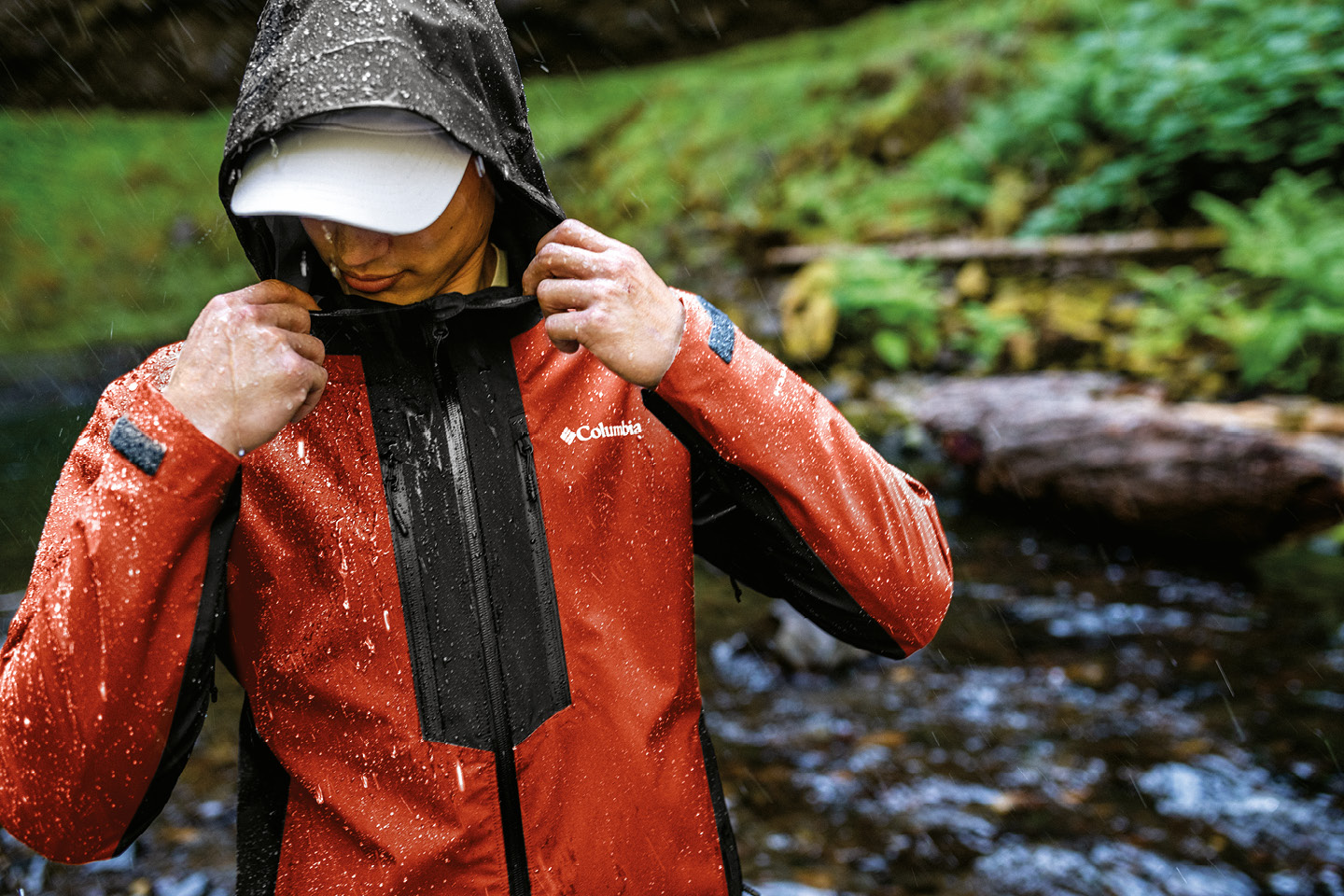Boxing Day 2023: the best deals from your favourite brands
Outdoor Activities | December 21, 2023
SAIL
May 2, 2023

When it comes to staying dry, not all jackets were created equal. Most of us wonder about the difference between waterproof, water-resistant and water-repellent… And we haven’t even added breathability into the mix yet! Whether you’re walking around town or through the middle of the woods, this article will go through the various waterproofing technologies available so you can choose the right jacket for your needs and protect yourself from the rain.
In this article, you will learn the difference between water-resistant, waterproof and water-repellent:
A water-resistant membrane is the first level of protection against rain. It is made using fabric that is so tightly woven that water struggles to get through and beads up on the surface instead. Water-resistant jackets can therefore withstand light rain showers. However, they will not keep you dry in heavy downpours.
In general, water-resistant outdoor jackets are made using synthetic materials such as polyester (which is also durable and crease-proof) or nylon (water-resistant but not very breathable). There are also new water-resistant technologies on the market, such as Omni-Shield™, which can withstand light showers, is stain-proof and dries quickly.
These types of jackets are usually lightweight, breathable and compact, and sometimes made using stretchy materials, which provide more freedom of movement and are less noisy than some other waterproof jacket models. They can also be more affordable.
To ensure your jacket lasts longer and improve its water resistance, don’t hesitate to spray the outer layer with a water-resistant treatment on a regular basis.
For everything you need to know about the criteria to consider when selecting rain gear, read our article.
Waterproofing technology provides the highest level of protection against the rain. The membrane in waterproof jackets is so tightly woven that nothing, not even rain or debris such as mud, dust or sand, gets through.
But waterproofing materials are usually not very breathable (think of a plastic bag or a poncho). That’s why outdoor jackets are often made using a waterproof-breathable membrane, which protects against the weather and lets sweat escape out.
The well-known Gore-Tex membrane, the Omni-Tech® technology or the OutDry™ Extreme technology are all prime examples of microporous waterproof-breathable membranes which provide just the right balance between waterproofing and breathability.
To find out just how waterproof a garment is, you’ll need to check the label for a metric called the Schmerber (10,000 Schmerber = 10,000 mm of water, which means the fabric would resist the pressure of a 10 m column of water). The higher the rating, the more waterproof the material. As a benchmark, most Gore-Tex jackets have a 28,000 mm Schmerber rating. It is also important to check that the zippers and seams on your jacket are sealed so that water doesn’t come through the small gaps.
To learn more about the five features of a perfect rain jacket, read our article.
A Durable Water Repellent (DWR) treatment is applied to the outer layer of most outdoor jackets (water-resistant and waterproof-breathable models). It prevents the garment from becoming saturated with water, which could compromise the breathability of the membrane.
DWR treatments must be evenly sprayed onto the outer layer of the jacket. It is also important to apply the treatment to a jacket that has been machine-washed beforehand so nothing clogs the breathable pores of the membrane.
Most new jackets already have a DWR-treated outer layer. However, it is recommended to respray your jacket on a regular basis (at least twice a year) to reactivate the fabric’s water-repellent properties.
For everything there is to know on how to maintain your outdoor gear to make it last, read our blog article.